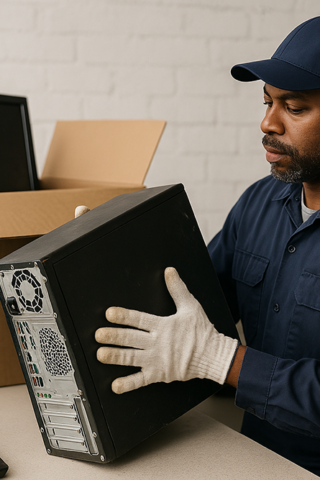TechnologyMagazine.com, April 2, 2023, Roel Decneut
The tech industry is one that thrives on the new. From new iPhone launches to Windows operating systems, we all love waiting in anticipation for the next big thing in technology.
But this attitude may be fuelling a planet-sized crisis that experts believe will only get worse unless something changes soon.
What used to be a small mound of old tech discarded on landfill sites now forms mini mountains – the peak of which is growing year-on-year. An estimated 74 million tonnes of e-waste will be produced globally every year by 2030, many of which will never be recycled or reused.
The ever-growing e-waste crisis
Sustainability is high up on the agenda for organisations, yet the issue of electronic waste often gets swept under the rug, especially when discussed next to emissions tracking and our carbon footprint. With the sheer amount of electronics in use today and the fashionable trend of upgrading smartphones and other bits of tech as soon as the next upgrade is released, the problem is only going to get worse.
There are simple solutions, however. We obviously can’t force people to change their buying habits, but we can impact what happens to technology once it’s no longer deemed useful.
It’s an unfortunate reality that most technology will end up in landfill. Only when devices reach end-of-life and are unable to be mended back to a productive state of health should they then go towards recycling. The issue is many business decision-makers think these are the only two options.
For example, due in part to a global pandemic and a realisation that ownership of devices simply doesn’t make a difference, the leasing market for IT equipment has blossomed. Organisations can now enjoy the IT equipment they want, at a cost spread out over the lifecycle of the device, and with IT asset management (ITAM) support.
What’s more, once devices start to reach a point where their speed, power, and productivity start to dip – typically after 4-5 years – not only can they be traded in for a new model, but the existing one can enjoy a second life elsewhere. The price of new technology twinned with a cost of living crisis has led to new, heightened appetite in the refurbished market, while restored devices can also be donated to charitable organisations.
And there lies the real problem. The majority of organisations today only undertake device maintenance reactively, when equipment breaks down or needs immediate repair. This typically happens during work, which also means downing tools, waiting for maintenance or IT support teams to arrive, or for a brand-new IT device to be delivered.
In order to truly move the needle, businesses need to get smarter with their assets – including proactive, predictive, and preventative maintenance.
The green power of IT asset management
IT asset management – the process of managing a company’s tech estate, usage, and investments – has a key part to play in providing long-term sustainable services.
Of course, there is a human element to IT managers focusing efforts on the sustainable management of devices, but there’s also an economic factor. By better managing their tech stack, businesses can get the most out of their assets while prolonging the life cycle of them.








